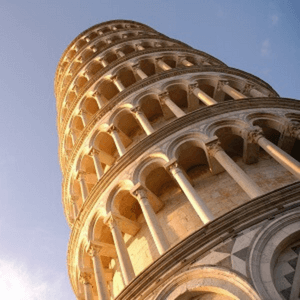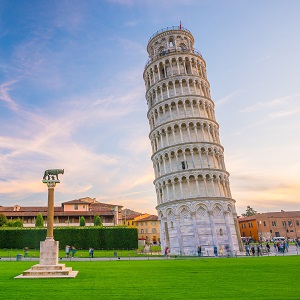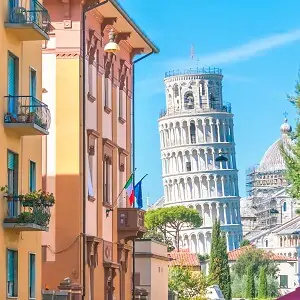Santa Maria della Spina may be on the smaller size, but its beauty is well worth the visit.
Nestled right along Pisa’s river, the tiny church stands out against the other riverbank buildings. A truly stunning piece of architecture that dates back to the early 13th century.
The History of Santa Maria della Spina
The church dates back to 1230, when it was owned by the Gualandi family, and originally known as Santa Maria di Pontenovo. In 1323, enlargements were made on the building, with architect Lupo di Francesco constructing the new changes on the building until 1376. After the unification of Italy, the city decided to dismantle and rebuild the church on higher ground, which was led by architect Vincenzo Micheli beginning in 1871 and ending in 1875. This resulted in the church moving a few metres to the east and raised higher above the ground and river. However, the remodelling, many of the extension sections of the marble were lost, making large changes to the overall.
The Design of Santa Maria della Spina
The Church is Pisan gothic style building, made up of white marble, with decorative windows, columns, and pillars to create a truly unique building. The marble, specifically polychrome marble creates a contrasting difference between the church and its neighbouring houses, with the bright white bright and bold against the deep blue river and brown buildings.
The front of the Church features two entrances with round arches, with statues of the Madonna and Child in the centre, with two angels either side. This was added in the 17th century, being the newest angels, as the other tabernacles structures were from the 14th-century. The southern side of the church features three decorative windows, with the door bursting with a collection of tabernacles in various size.
The interior of Santa Maria della Spina
Compared to the grand exterior of the church, the inside is a lot less glamorous. With a simple design featuring a wooden ceiling constructed in the 19th century. However, it’s not the design of the Church’s interior that draws its visitors, but what contains within the room. Holding a range of temporary exhibitions of historic and iconic paintings and sculptures throughout the year.
Explore Our Pisa Tours
-
Half Day Pisa Tour from Florence
5.5 Hours
€55
See More -
1 Hour Guided Pisa Tour
1 Hour
€15
See More -
Two Hour Pisa Walking Tour
2 Hours
€38
See More




